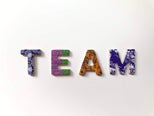
Understanding the strengths of team members is more than a managerial responsibility; it is a strategic imperative. High-performing teams are built on the foundation of complementary skills, where individual contributions amplify collective success. Key benefits of identifying strengths include:
- Increased Engagement: Employees who feel their strengths are recognized and utilized report higher levels of job satisfaction and commitment.
- Enhanced Productivity: Leveraging individual strengths leads to improved performance and efficiency.
- Stronger Collaboration: Understanding diverse strengths fosters better team dynamics and synergy.
- Targeted Development: Identifying strengths enables tailored training and development opportunities.
Aligning Ambitions with Organizational Goals
Individual ambitions can either align with or diverge from organizational objectives. Effective leaders bridge this gap by:
- Conducting Regular Check-ins: Engaging in open conversations to understand employees’ aspirations.
- Providing Career Pathways: Offering clear progression opportunities that align with both personal and organizational goals.
- Encouraging Ownership: Empowering employees to take initiative in areas that resonate with their ambitions.
- Balancing Needs: Ensuring alignment between individual aspirations and team priorities to achieve mutual benefits.
Strategies for Boosting Team Visibility
Visibility is essential for career growth and organizational recognition. Implementing strategies to enhance team visibility ensures that contributions are acknowledged and rewarded. These strategies include:
- Showcasing Achievements: Regularly highlighting team successes through meetings, newsletters, and social media.
- Encouraging Networking: Facilitating connections within and outside the organization to broaden exposure.
- Promoting Thought Leadership: Encouraging employees to share expertise through blogs, webinars, and industry events.
- Creating Cross-functional Opportunities: Allowing team members to collaborate across departments to showcase their skills.
- Leveraging Technology: Using tools like performance management systems to track and share accomplishments.
The Role of Leadership in Recognition
Leaders play a pivotal role in identifying strengths, aligning ambitions, and boosting visibility. Key leadership practices include:
- Active Listening: Taking the time to understand individual perspectives and aspirations.
- Providing Feedback: Offering constructive feedback that reinforces strengths and identifies growth areas.
- Celebrating Successes: Recognizing achievements publicly to foster a culture of appreciation.
- Championing Development: Investing in training and mentorship programs that nurture talent.
Case Studies
Case Study 1: Google’s Project Aristotle
Google’s research on team effectiveness, known as Project Aristotle, revealed that understanding individual strengths and fostering psychological safety were critical to team success. By creating an environment where employees felt valued and understood, Google enhanced team performance and innovation.
Case Study 2: Microsoft’s Growth Mindset Initiative
Under Satya Nadella’s leadership, Microsoft embraced a growth mindset culture. By prioritizing employee strengths and ambitions, the company aligned individual goals with organizational objectives, leading to a surge in creativity and collaboration.
Measuring the Impact of Visibility Initiatives
To ensure the effectiveness of visibility strategies, organizations must measure their impact using key performance indicators (KPIs), such as:
- Employee Engagement Scores: Tracking changes in engagement levels over time.
- Recognition Metrics: Monitoring the frequency and quality of recognition received by employees.
- Career Progression Rates: Evaluating promotions and role expansions.
- Feedback Surveys: Gathering insights from employees about their perception of visibility initiatives.
Challenges and Solutions
Boosting visibility comes with challenges, such as biases in recognition and potential burnout. Solutions include:
- Ensuring Fairness: Establishing clear and transparent criteria for recognition.
- Avoiding Overload: Balancing visibility initiatives with manageable workloads.
- Providing Inclusive Opportunities: Ensuring all team members have equal chances to showcase their strengths.
Future Trends in Team Visibility
The future of work emphasizes personalization and inclusivity. Emerging trends include:
- AI-Driven Insights: Using artificial intelligence to identify strengths and tailor development plans.
- Virtual Platforms: Leveraging digital tools to enhance visibility in remote and hybrid work environments.
- Collaborative Recognition: Encouraging peer-to-peer recognition through social platforms.
Conclusion
Understanding team strengths and ambitions is the cornerstone of building high-performing teams and fostering organizational growth. By aligning individual aspirations with organizational goals and implementing visibility strategies, leaders can create a culture where employees feel valued, recognized, and empowered. As the workplace evolves, prioritizing these practices will remain essential for driving engagement, innovation, and success.
References
- Buckingham, M., & Clifton, D. O. (2001). Now, Discover Your Strengths. Free Press.
- Rath, T. (2007). StrengthsFinder 2.0. Gallup Press.
- Dweck, C. S. (2006). Mindset: The New Psychology of Success. Random House.
- Goleman, D. (1995). Emotional Intelligence: Why It Can Matter More Than IQ. Bantam Books.
- Lencioni, P. (2002). The Five Dysfunctions of a Team: A Leadership Fable. Jossey-Bass.
- Collins, J. (2001). Good to Great: Why Some Companies Make the Leap... and Others Don’t. HarperBusiness.
- Pink, D. H. (2009). Drive: The Surprising Truth About What Motivates Us. Riverhead Books.
- Sinek, S. (2009). Start with Why: How Great Leaders Inspire Everyone to Take Action. Portfolio.
- Covey, S. R. (1989). The 7 Habits of Highly Effective People: Powerful Lessons in Personal Change. Free Press.
- Schwartz, T. (2010). The Way We’re Working Isn’t Working. Free Press.
- Grant, A. (2013). Give and Take: A Revolutionary Approach to Success. Viking.
- Brown, B. (2012). Daring Greatly: How the Courage to Be Vulnerable Transforms the Way We Live, Love, Parent, and Lead. Gotham Books.
- Kahneman, D. (2011). Thinking, Fast and Slow. Farrar, Straus and Giroux.
- Heath, C., & Heath, D. (2007). Made to Stick: Why Some Ideas Survive and Others Die. Random House.
- Deloitte. (2020). The Workforce of the Future: Navigating Uncertainty. Deloitte Insights.
- McKinsey & Company. (2021). The Future of Work After COVID-19. McKinsey & Company.
- HBR Editors. (2011). On Communication. Harvard Business Review Press.
- Gallup. (2021). State of the Global Workplace Report 2021. Gallup.
- PwC. (2020). Future of Work: How to Win in a Fast-Changing World. PwC Insights.
- World Economic Forum. (2020). The Future of Jobs Report. World Economic Forum.

